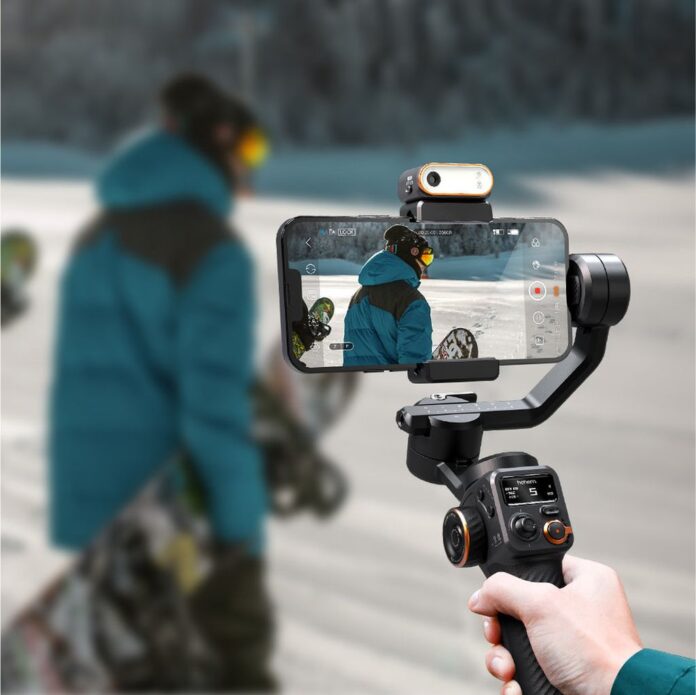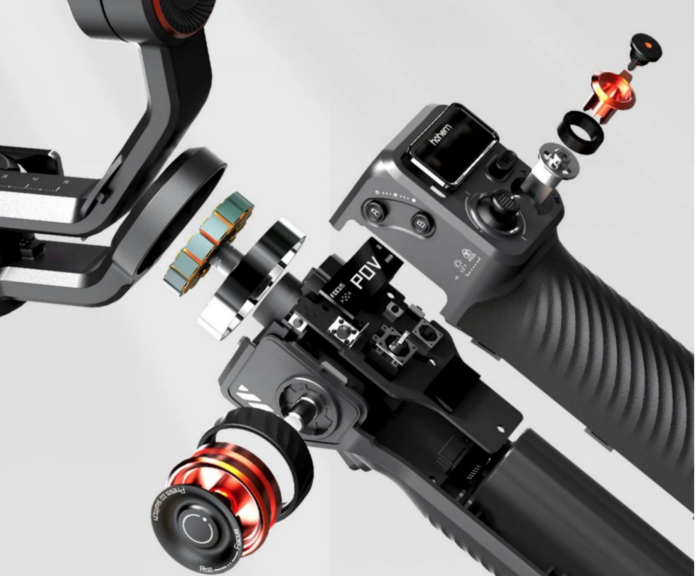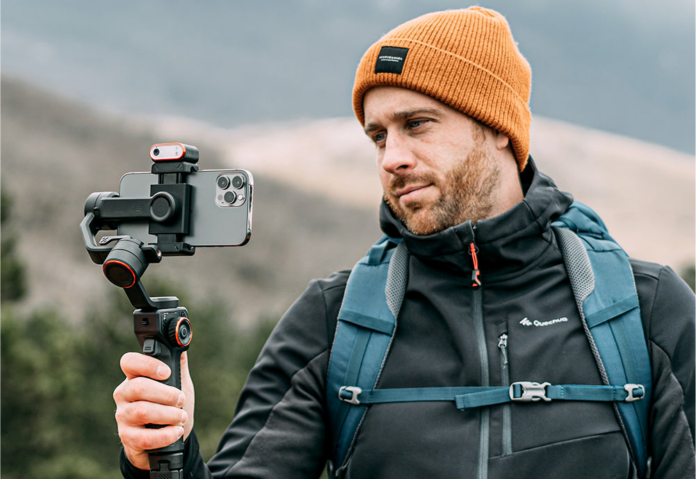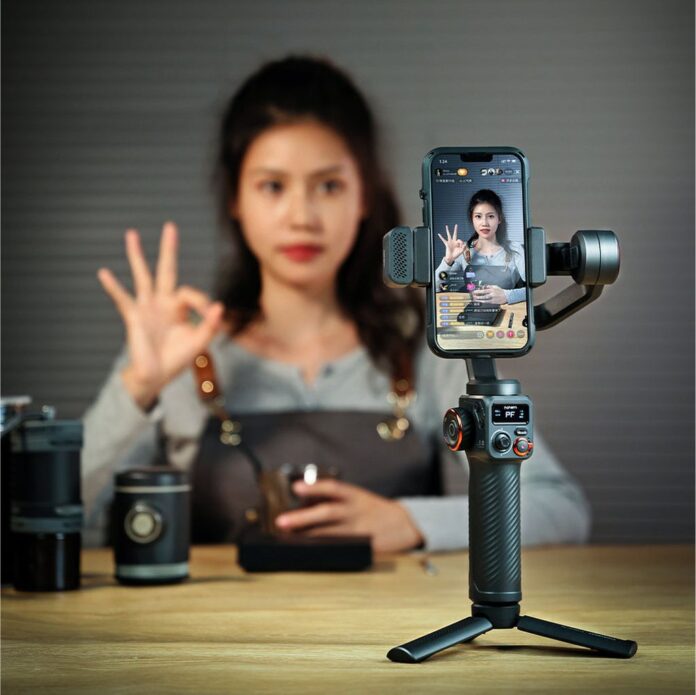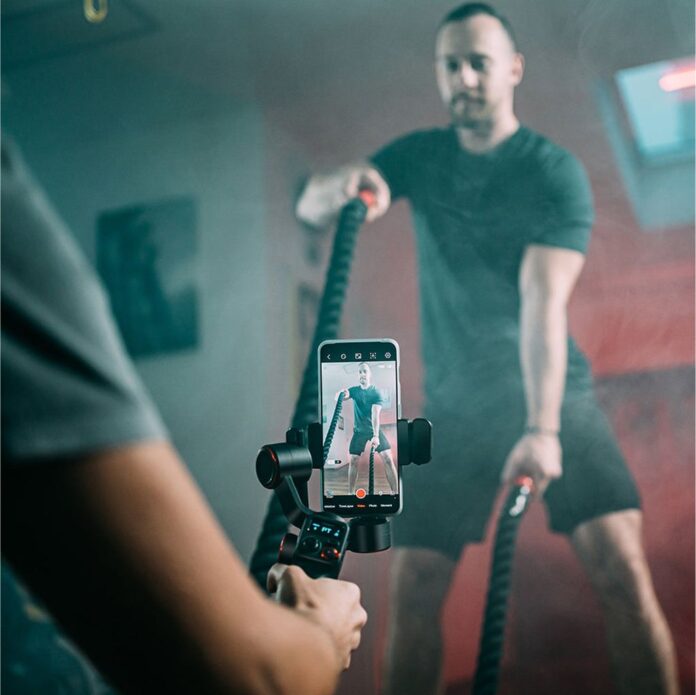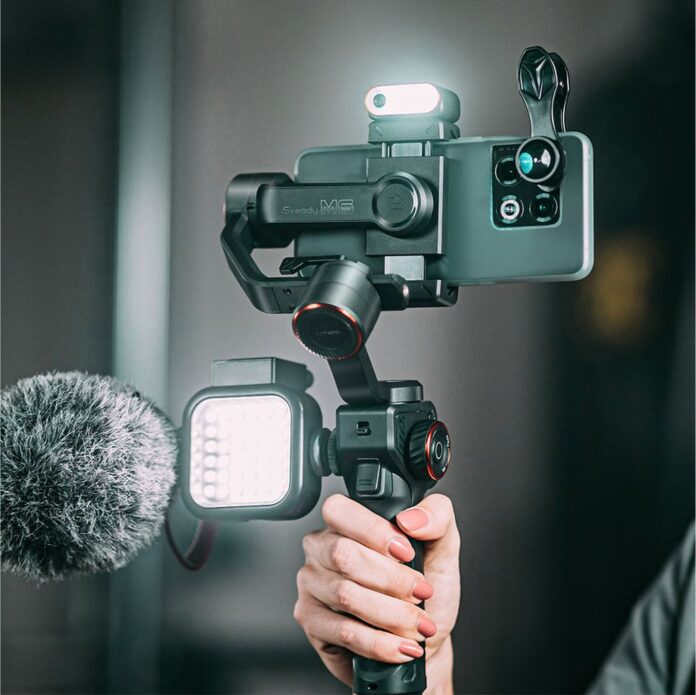Welcome to the dynamic world of cinematic smartphone videography! As technological advancements continue to reshape our smartphones, making them more adept at various tasks, many enthusiasts are exploring mobile filmmaking’s expansive horizons. Yet, even the most sophisticated smartphones, brimming with impressive features, sometimes fall short when it comes to capturing flawless, cinema-like footage.
This is where the gimbal stabilizer makes its grand entrance. This tool, though compact, can dramatically improve your shooting experience. In this comprehensive guide, we’ll embark on a journey, shedding light on the mechanics of gimbals, their significance, and the groundbreaking impact of artificial intelligence (AI) on them.
The Basics of Smartphone Stabilization
For passionate filmmakers, content creators, or even novices eager to capture their memories, stabilization stands out as the pivotal element that can elevate a video from shaky and amateurish to sleek and professional. While today’s smartphones come equipped with built-in stabilization mechanisms, they sometimes don’t quite hit the mark, especially when one has cinematic aspirations. These native features typically encompass two types: mechanical (OIS) and electronic (EIS) stabilization. But as convenient as they are, there are inherent limitations. For instance, while capturing videos on the move or during impromptu, fast-paced activities, subtle shakes or pronounced jitters can tarnish the video’s quality.
How Gimbal Stabilizers Work
At their essence, gimbals are marvels of engineering, seamlessly blending sensors and motors. These sensors play a crucial role, diligently detecting unintended, disruptive movements such as shakes. In tandem, the motors spring into action, compensating for these motions by intuitively moving the phone in the opposing direction. It’s this delicate balance of detection and compensation that ensures viewers are treated to smooth, cinema-worthy videos. And while smartphone internal stabilizations have their merit, they can’t rival the versatility and adaptability that gimbals bring to the table, especially in challenging shooting environments.
Mechanical vs. Electronic Stabilization
Mechanical and electronic stabilization, while both serving the same purpose, differ vastly in their approaches. Mechanical stabilization, or OIS, takes a direct approach. By physically adjusting the camera or specific components within, it offsets the jitters and shakes. Electronic stabilization (EIS), on the other hand, adopts a more software-centric method. It slightly crops the video and then uses algorithms to provide a stable output. While OIS promises genuine, hardware-level fixes that often yield more natural results, EIS might compromise video quality slightly due to the cropping. Therefore, understanding these nuances is vital when choosing a stabilization technique that aligns with one’s needs and the kind of output they desire.
The Integration of AI in Gimbal Stabilizers
Artificial Intelligence is no longer confined to sci-fi narratives; it’s very much a tangible, transformative force in today’s tech landscape. Gimbals, too, have been touched by AI’s magic. No longer just about stabilizing, modern gimbals can predict, adapt, and optimize. AI doesn’t just enhance stabilization; it also intuitively adjusts parameters like exposure and focus based on the shooting environment, ensuring that every frame is as close to perfection as possible.
AI-Powered Auto-Tracking
This feature is nothing short of revolutionary for vloggers and content creators who often operate solo. Through AI, gimbals can now lock onto a subject, ensuring they remain center stage, regardless of their movements or the cameraperson’s adjustments. This dynamic tracking capability ensures that subjects, whether they’re performing intricate dance moves or showcasing a product, remain consistently in focus and in the frame. It’s a dynamic tool that breathes life into shots, making them more engaging and captivating.
Gesture and Voice Control
While manual controls have their charm, there’s something undeniably futuristic about directing your gimbal with a mere gesture or voice command. Models like the Hohem iSteady M6 Kit have tapped into AI’s potential to offer such features. Filmmakers can now execute complex shots or swiftly change settings without fiddling with buttons or touchscreens. This hands-free operation broadens creative horizons, enabling filmmakers to experiment and innovate on the go.
Enhanced Stabilization Algorithms
Beyond the standard stabilization mechanisms, AI-driven algorithms elevate the game. These smart algorithms don’t just react; they anticipate. By analyzing motion data in real-time, they make micro-adjustments that are often imperceptible to the human eye but make a world of difference in the final footage. The result? Videos that are not just stable but also possess a fluidity that’s reminiscent of professional cinematic productions.
Time-Lapse and Panorama Modes
Time-lapses and panoramas are beloved by many for their ability to capture the essence of a scene. With AI’s involvement, these modes have seen substantial enhancements. AI diligently analyzes each scene, adjusting exposure settings to ensure consistent lighting. Additionally, for intricate shots that demand precision, AI can automate and optimize camera movements, guaranteeing results that are nothing short of breathtaking.
The Impact of AI on Mobile Filmmaking
Mobile filmmaking, once seen as the domain of hobbyists, has undergone a renaissance, thanks to AI-powered gimbals. These tools have empowered indie filmmakers, offering them cinematic prowess without the need for bulky equipment or extravagant budgets. The intersection of AI and gimbals has democratized filmmaking, paving the way for diverse narratives and perspectives to emerge and be celebrated.
Choosing the Right AI-Powered Gimbal
Venturing into the AI gimbal realm might seem daunting, given the plethora of options. However, by focusing on your unique needs, such as phone compatibility, budget constraints, and the specific AI features you covet, the decision becomes more straightforward. Whether you prioritize auto-tracking prowess or desire unparalleled stabilization algorithms, there’s likely a gimbal tailored for you. Thorough research, coupled with user reviews, will guide you to your ideal match.
Conclusion
Gimbal stabilizers, especially those infused with AI, have redefined the boundaries of smartphone videography. From their foundational stabilization roles to the avant-garde AI enhancements, they stand testament to how technology can elevate art. Whether you’re a seasoned filmmaker, an emerging content creator, or someone eager to immortalize memories with cinematic flair, AI gimbals beckon with promise. Dive into this captivating world and let your creative spirit soar. As always, we welcome your insights, experiences, and queries. Happy filming!

